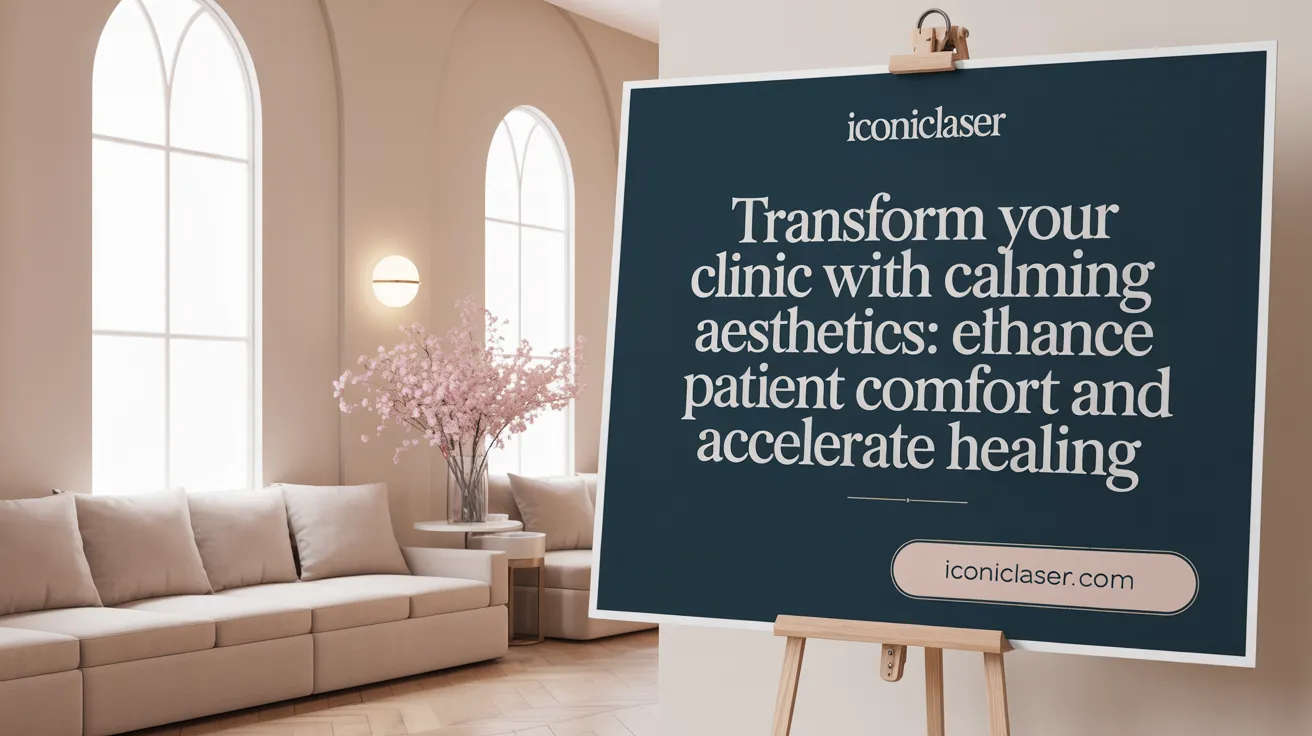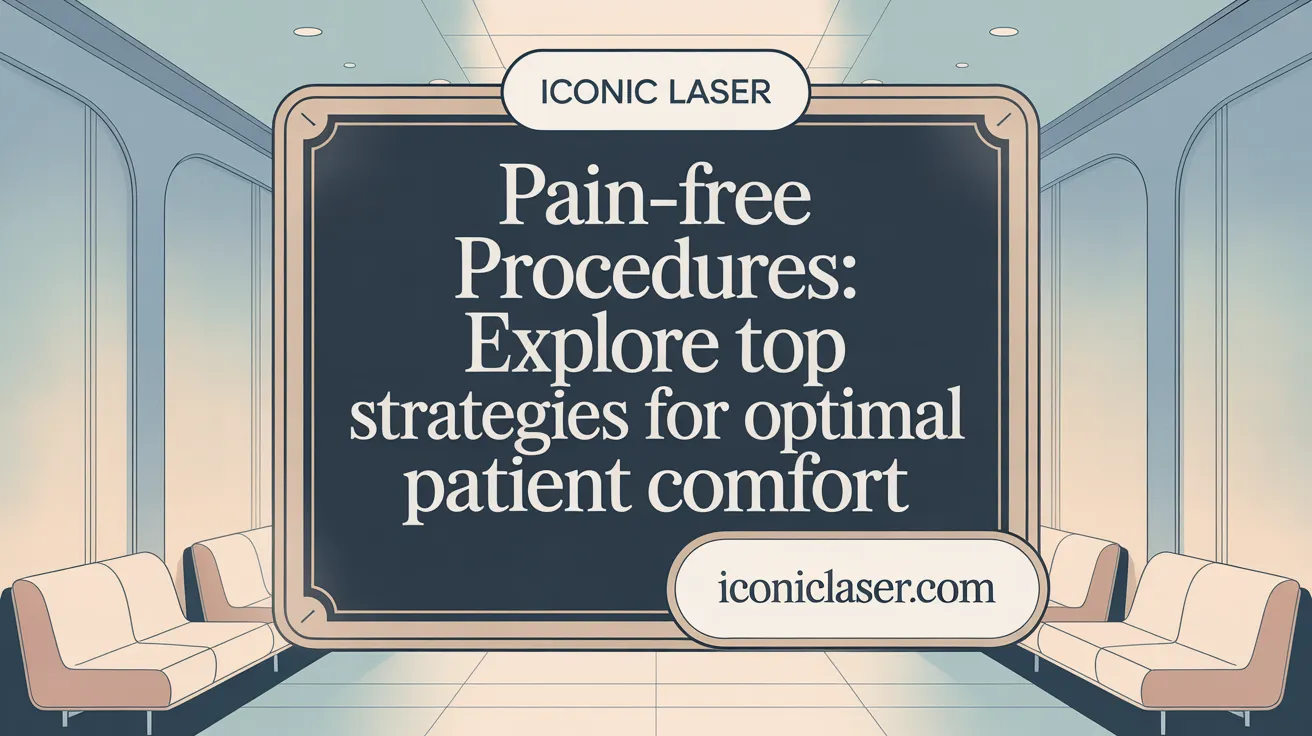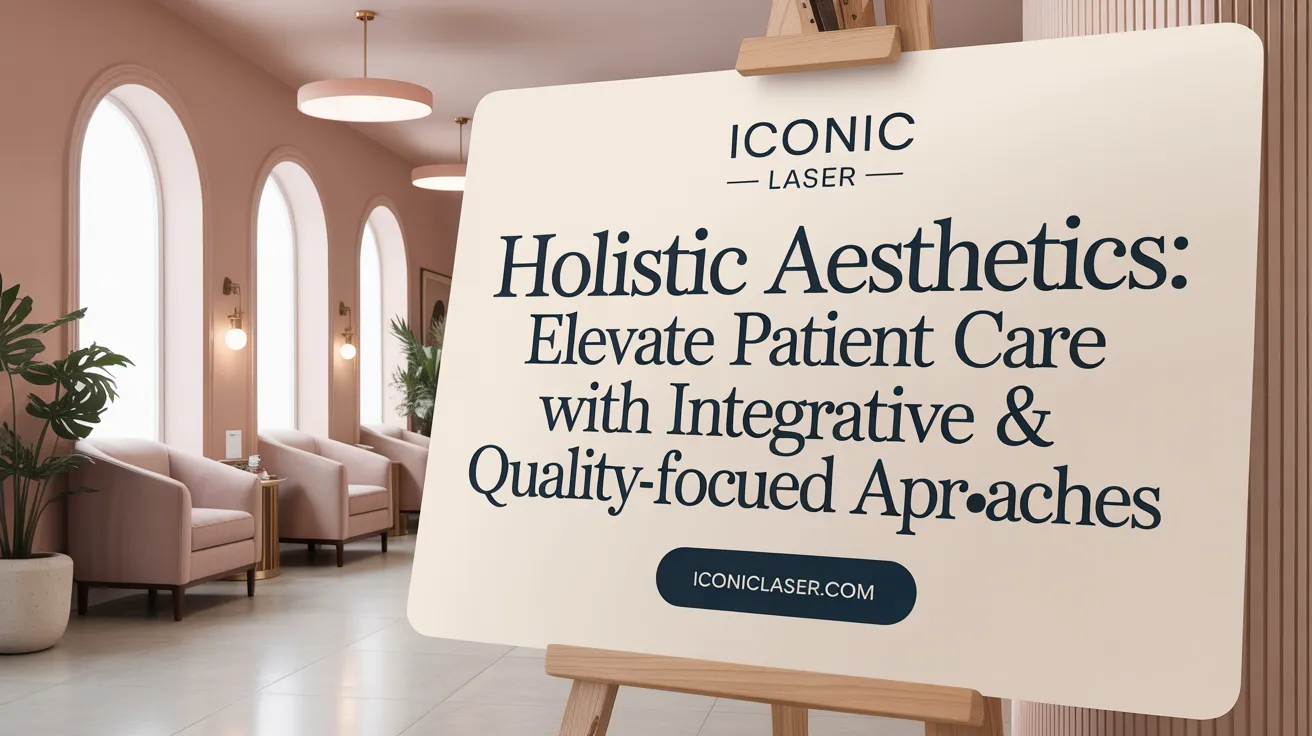Setting the Stage for Safe and Comfortable Aesthetic Care
Medical aesthetics is an evolving field that blends the art of enhancing appearance with rigorous medical practice, prioritizing patient safety and comfort at every turn. As demand for minimally invasive and non-invasive treatments grows worldwide, ensuring high standards of care—ranging from thorough patient assessments to the use of advanced technologies—is essential. This article explores how medical aesthetics professionals focus on protecting patients through ethical considerations, safety protocols, technological innovation, environmental design, and communication strategies to deliver not only beautiful results but improved well-being and trust.
The Ethical Foundations Guiding Patient Safety in Medical Aesthetics
What ethical principles underpin patient safety in medical aesthetics?
Medical aesthetics rests on core ethical principles that prioritize patient safety and well-being. These principles include:
- Autonomy: Respecting patients' rights to make informed decisions about their care.
- Beneficence: Ensuring treatments provide clear benefits.
- Non-maleficence: Avoiding harm from procedures.
- Justice: Providing fair access and treatment without discrimination.
These principles establish a framework that guides practitioners to act responsibly while tailoring care to each individual’s needs and circumstances. For more detailed insights, see Ethical principles in aesthetic medicine.
How is patient autonomy respected during aesthetic treatments?
Respecting patient autonomy involves thorough informed consent where patients receive clear, honest explanations about the benefits, risks, and limitations of treatments. Practitioners must honor patients’ decisions, support their preferences within safe boundaries, and correct misinformation. This empowers patients to participate actively and confidently in their aesthetic care choices. Refer to Informed consent in aesthetic medicine and Managing patient expectations for more information.
Professional training and regulation to minimize risks
To uphold these ethical principles, stringent professional training and regulation are essential. Qualified practitioners with comprehensive knowledge of facial anatomy and procedure-specific skills ensure competence and reduce complications. Continuous education helps providers stay current with evolving techniques and safety protocols, thus safeguarding patients. See guidelines on Medical aesthetic procedures and qualified professionals and Patient safety in aesthetic medicine for further reading.
The physician−patient relationship and trust
Building trust through transparent dialogue and empathy strengthens the physician−patient bond. Honest communication about what results are realistically achievable fosters patient satisfaction and reduces dissatisfaction. This relationship is pivotal for navigating complex emotional and psychological factors tied to aesthetic treatments. Explore more about the Physician-patient relationship and managing expectations and Psychological benefits of facial surgery.
Managing expectations through honest communication
Clear, empathetic communication before, during, and after procedures helps manage expectations effectively. Discussing possible outcomes, recovery times, and any side effects prevents misunderstandings. Providing follow-up support also ensures patients feel supported throughout their aesthetic journey, enhancing safety and satisfaction. See Managing patient expectations and Improving patient outcomes in aesthetic procedures for practical approaches.
Professional Training, Certification, and Regulatory Oversight

Why is training and certification critical for safety in aesthetic treatments?
Aesthetic treatments involve altering, stimulating, or destroying living tissue, which demands a high level of professional skill similar to other medical procedures. Proper training and certification are essential to equip practitioners with comprehensive knowledge of anatomy, procedural techniques, and potential complications. This preparation enables them to assess patient suitability adequately, perform treatments safely, recognize adverse events promptly, and apply effective responses. Without rigorous training, the risk of errors, such as infections or unintended aesthetic outcomes, substantially increases, compromising patient safety (Medical aesthetic procedures guidelines, Patient Safety in Aesthetic Procedures).
What regulatory bodies oversee med spas and aesthetic clinics?
Med spas and medical aesthetic clinics are regulated by state medical and nursing boards. These organizations enforce licensing requirements, supervise treatment protocols, oversee treatment delegation, and ensure compliance with health and safety laws such as HIPAA and OSHA. Licensing mandates that practitioners—including physicians, nurse practitioners, physician assistants, and aestheticians—maintain valid credentials and continued education. Regulatory oversight also includes monitoring advertising standards and maintaining patient privacy, safeguarding both patients and providers (Medical spas, Ensuring Patient Safety in Medical Spas).
Role of medical directors in med spas
Medical directors hold ultimate responsibility for patient care quality in med spas. They develop detailed treatment protocols, oversee practitioner training, ensure adherence to safety standards, and manage regulatory compliance. Their supervision guarantees that all medical aesthetic treatments are performed or directly supervised by qualified personnel, maintaining clinical rigor within spa environments (Medical aesthetic procedures guidelines, Patient Safety in Medical Spas.
Continuous education and certification
Ongoing education through workshops, certifications, and professional development is vital for practitioners to stay current with evolving technologies, new procedures, and updated safety guidelines. Regular skill assessments and training update clinicians on managing complications effectively, thereby enhancing patient outcomes (Continuous education in aesthetics, Patient Safety in Medical Spas.
Malpractice insurance and risk management
Maintaining comprehensive malpractice insurance protects both patients and practitioners by covering liabilities arising from complications or treatment errors. Understanding insurance coverage and implementing risk management strategies, including thorough patient consent and transparent communication about treatment risks, further promotes safe practice in medical aesthetics (Improving patient safety in medspas, Patient Safety in Aesthetic Medicine).
Comprehensive Patient Assessment and Informed Consent
What role does patient assessment play in safety?
Initial face-to-face examination and thorough health assessment are fundamental for safe medical aesthetic procedures. This process includes reviewing a patient's medical history and conducting a physical examination to identify any contraindications or conditions that may increase risks. Screening helps practitioners tailor treatments to individual needs and minimize potential adverse effects. By understanding each patient’s unique health profile, providers can prevent complications and ensure procedures are appropriate for their condition. For detailed guidelines on patient safety and screening protocols in medical aesthetics, see Patient Safety in Aesthetic Medicine and Patient Screening Protocols.
How does informed consent enhance patient comfort and safety?
Prior to treatment, open discussions about the potential risks, benefits, and realistic outcomes are crucial. Informing patients in clear, empathetic language builds trust and reduces anxiety. Patients who are aware of what to expect tend to feel more comfortable throughout the process. Documenting informed consent signifies that patients have understood their options, agreed to the procedure voluntarily, and supports shared decision-making, which improves overall satisfaction and safety. Explore best practices on managing patient expectations and communication in aesthetics at Manage Patient Expectations for First-Time Aesthetic Treatments and Improving Patient Outcomes in Aesthetic Procedures.
Documenting informed consent
A comprehensive written consent form should be completed, outlining:
- Proposed procedure details
- Possible risks and complications
- Expected benefits
- Alternative treatments
- Post-procedure care instructions
This documentation serves as a legal and ethical safeguard for both patient and practitioner. For further recommendations on medical aesthetics practice guidelines and informed consent, refer to Medical Aesthetic Procedures Guidelines and Ensuring Patient Safety in Medical Spas.
By integrating detailed patient assessments with clear informed consent protocols, medical aesthetic practices can significantly enhance patient safety and comfort, resulting in improved outcomes and trust in care. For a comprehensive overview of enhancing patient comfort and safety in medical aesthetics, see Optimizing Patient Comfort and Safety in Aesthetic Procedures and The Role of Technology in Enhancing Patient Safety and Comfort in Aesthetics.
Safety Protocols and Aseptic Techniques in Procedures
What aseptic techniques are recommended in medical aesthetic procedures?
Maintaining strict aseptic techniques is essential to ensure patient safety and prevent infections during medical aesthetic procedures. Clinics follow meticulous guidelines to achieve this. For detailed recommendations and consensus, refer to Standards for aseptic techniques in medical aesthetics.
Step-by-step aseptic guidelines for clinics
Medical aesthetic clinics implement detailed procedures including thorough cleansing of the treatment room, disinfection of surfaces, and strict preparation routines for both patient and practitioner. More information is available in Clinical guidelines for aseptic techniques in aesthetics.
Use of skin disinfectants such as chlorhexidine and alcohol
Before any procedure, skin disinfection using agents like 2% chlorhexidine or 70% isopropyl alcohol is recommended. These disinfectants effectively reduce microbial contamination on the skin surface. See Disinfection techniques using chlorhexidine and isopropyl alcohol for in-depth guidance.
Practitioner personal protective equipment (PPE)
Practitioners are advised to wear appropriate PPE, which includes gloves, masks, and sometimes gowns, to minimize contamination risks during treatments. The preparation of the practitioner is discussed in detail at Practitioner preparation including PPE and attire.
Treatment room preparation and surface disinfection
Treatment rooms must be regularly cleaned and disinfected, with attention to all surfaces to create a sterile environment that minimizes the chance of infection. Refer to Surface cleaning and air circulation for asepsis for comprehensive standards.
Waste disposal and air circulation standards
Clinics also ensure proper disposal of medical waste and maintain adequate air circulation within treatment areas, both critical in preventing cross-contamination and maintaining hygiene standards. These practices are further elaborated in Waste disposal practices in aesthetic clinics.
By adhering to these aseptic protocols, aesthetic clinics can significantly minimize the risk of infections and promote safer treatment outcomes for patients.
Mitigating and Managing Complications and Adverse Events
How are complications in aesthetic procedures minimized and managed?
Complications in aesthetic procedures, such as infections and vascular occlusions, are minimized through comprehensive patient screening and adherence to strict aseptic techniques. Proper staff training and certification ensure practitioners have the necessary anatomical knowledge and clinical skills, as highlighted in guidelines for patient safety in aesthetic procedures. Continuous education helps keep professionals updated on evolving safety protocols.
Early identification and prompt management of complications are critical. Medical directors play a central role by supervising treatment protocols and guiding swift medical interventions when adverse events occur. Immediate reporting of complications to regulatory bodies, such as the FDA’s MedWatch program, contributes to patient safety by informing improvements in standards and preventing recurrence.
What challenges exist regarding complication reporting, and how are regulatory efforts addressing them?
Complication underreporting remains a significant concern, obscuring true safety profiles and hindering preventive measures. Legislative initiatives like Brazil's PL n. 9602/2018 enforce compulsory notification of aesthetic procedure complications to improve transparency and public safety.
Incident reporting systems in clinics are designed to be confidential and non-punitive, encouraging open disclosure and root-cause analyses. These systems enable healthcare teams to implement corrective actions and enhance safety standards.
What malpractice insurance considerations are important in managing complications?
Understanding malpractice insurance coverage is vital for legal protection and risk mitigation in aesthetic practices. Providers must secure appropriate policies that cover aesthetic procedures, given potential risks involved. Insurance safeguards both patients and practitioners, ensuring accountability and support during complication management, as discussed in resources about malpractice insurance in medical aesthetics.
By integrating rigorous training, regulatory compliance, incident reporting, and insurance preparedness, medical aesthetic providers can effectively mitigate and manage complications, fostering safer treatment environments and improved patient outcomes.
Technological Innovations Enhancing Safety and Comfort
What technologies improve patient safety in medical aesthetics?
Recent advancements in technology have significantly improved both the safety and comfort of patients undergoing medical aesthetic procedures.
High-resolution ultrasound imaging is a pivotal tool that allows practitioners to visualize underlying anatomical structures, such as blood vessels, nerves, and fat pads. This visualization is crucial in preventing vascular injuries, which are serious complications during injectable treatments.
Artificial intelligence (AI) enhances treatment safety by analyzing skin texture, elasticity, and volume loss to create customized treatment plans. AI also predicts potential adverse outcomes, helping clinicians select the safest and most effective procedures tailored to each patient's unique anatomy.
To improve patient comfort, cooling devices like Zimmer Cryo machines are employed during laser treatments. These devices minimize pain and reduce inflammation, making the procedures more tolerable.
Digital imaging systems, including 3D visualization tools, allow patients and practitioners to preview possible outcomes. This technology aids in setting realistic expectations, improving satisfaction and minimizing post-procedure disappointment.
Finally, remote patient monitoring through secure mobile applications permits ongoing communication during recovery. Patients can submit photos or videos, enabling early detection and prompt management of any complications.
Together, these technologies create a safer, more personalized, and more comfortable experience in medical aesthetic care. For more information, see The Role of Technology in Enhancing Patient Safety and Comfort in Aesthetics.
Creating Aesthetic Environments for Patient Comfort and Healing

How does the aesthetic design of clinics affect patient comfort?
Calming images and home-like furnishings in clinical settings play a vital role in soothing patients during vulnerable moments. These elements create a welcoming atmosphere that feels safe and comforting, encouraging mental rest and emotional ease.
Hospitals and clinics that reduce noise and sensory disturbances provide patients a much-needed retreat from overwhelming stimuli. Quiet spaces allow for relaxation and recovery, helping to lower stress and anxiety levels.
Designing areas specifically for peace and reflection, such as tranquil waiting rooms or softly decorated patient rooms, supports patients' psychological well-being. These spaces foster hope and thoughtful experiences that enhance healing.
Incorporating natural elements like pictures of nature or plant arrangements in healthcare environments further promotes calmness and a sense of connection to the outside world.
Together, these aesthetic considerations improve patient satisfaction and can contribute to better recovery outcomes by helping patients feel cared for, secure, and mentally rested.
Pain Management Strategies During Aesthetic Treatments

What methods are used to reduce pain during cosmetic treatments?
Managing pain effectively during aesthetic procedures is essential for patient comfort and satisfaction. One widely used method is the application of topical anesthetics, such as Emla cream. This numbing cream is typically applied at least one hour before the procedure to reduce needle and laser-related pain. Patients should consult their clinician to confirm its suitability for their specific treatment. For further details, see Tips for a Less Painful Cosmetic Treatment Experience.
Pre-procedure preparation and patient education
Patient comfort starts before the treatment begins. Thorough consultations help set realistic expectations and alleviate anxiety. Clear communication about the procedure steps and expected sensations empowers patients and reduces surprises that can increase discomfort. See more on managing patient expectations and patient motivations for cosmetic procedures.
Relaxation and distraction techniques during procedures
During treatment, relaxation methods like deep breathing exercises or engaging distraction techniques can significantly improve patient comfort. Some clinics also incorporate calming environments or ambient features to help patients relax throughout the session, as discussed in aesthetic elements in neurological patient care and optimizing patient comfort.
Comfortable clothing and environment adjustments
Encouraging patients to wear comfortable clothing suited to the treatment area enhances physical ease. A tranquil and well-prepared treatment environment, with controlled temperature and calming aesthetics, also contributes to reducing perceived pain. For more on environment aesthetics and patient experiences, see aesthetics in healthcare quality and medical aesthetics clinic environment.
Post-treatment care instructions for minimizing discomfort
After the procedure, specific care guidelines are crucial. Patients are advised to avoid touching or rubbing the treated area, maintain cleanliness, and use recommended pain relievers if necessary. They should also avoid extremes in temperature and promptly consult their provider if unusual symptoms arise, ensuring safe and comfortable recovery. Detailed care advice can be found in resources on improving patient safety in medspas and patient safety in medical aesthetics.
Effective Communication and Managing Patient Expectations

Clear explanation of treatment options, risks, and outcomes
Providing patients with detailed information about the available aesthetic medicine treatments, their benefits, associated risks of aesthetic procedures, and expected outcomes is fundamental. This transparency ensures patients understand what they can realistically anticipate, which directly contributes to their safety and comfort throughout the treatment journey.
Empathy and transparent dialogue to build trust
Approaching patient interactions with empathy and honesty fosters trust in the physician−patient relationship. Transparent dialogue helps patients feel valued and supported, which can alleviate anxiety and improve overall treatment satisfaction in cosmetic procedures.
Addressing misinformation and unrealistic goals
Many patients come with preconceived notions or misinformation, often influenced by social media impact on beauty standards or external pressures. It is essential to clarify misconceptions and gently guide patients away from unattainable or unsafe goals by providing evidence-based information and setting achievable expectations, which improves patient safety in aesthetic medicine.
Follow-up discussions to handle dissatisfaction
Even with excellent procedures, some patients may experience dissatisfaction due to personal perceptions. Scheduled follow-up consultations offer an opportunity to discuss concerns, manage emotions, and propose solutions if adjustments are needed, thereby enhancing comfort and safety post-treatment as described in managing patient expectations for first time aesthetic treatments.
Role of consultations in patient safety and comfort
Consultations serve as the foundation for effective communication, enabling thorough assessment of patient health, motivations, and expectations. They provide a platform to educate patients, obtain informed consent, and tailor treatments accordingly. This process is critical for minimizing risks, promoting patient comfort, and ensuring a satisfying aesthetic outcome as highlighted in Patient Safety in Medical Spas.
Why is managing patient expectations important for safety and comfort?
Managing expectations through honest, empathetic communication reduces patient anxiety, prevents dissatisfaction, and helps patients make informed decisions aligned with realistic outcomes. This approach not only enhances safety by reducing the likelihood of risky or unsuitable procedures but also improves the overall patient experience and comfort during aesthetic treatments as explained in 4 Tips for Improving Patient Outcomes as an Aesthetic Professional.
Psychosocial Benefits of Aesthetic Treatments and Patient Well-being
How do aesthetic procedures contribute to psychological and emotional well-being?
Aesthetic treatments have been shown to significantly improve psychological health by reducing anxiety and depression. Patients often report increased self-esteem and a more positive body image following procedures like Botox, dermal fillers, and facial surgeries. These therapies help enhance social functioning, enabling patients to engage more confidently in social and professional environments (Mental Health and Psychosocial Wellbeing).
Improvements in self-esteem, anxiety, and depression
Multiple studies confirm that aesthetic interventions lead to decreased feelings of anxiety and depression. This psychological uplift supports a better quality of life, creating a lasting boost in mental health that extends well beyond the initial recovery period (Health Benefits of Facial Surgery).
Enhancement of social functioning and life satisfaction
By improving appearance and reducing signs of aging or skin imperfections, patients experience greater social satisfaction and better professional opportunities. Increased confidence brings about happier personal relationships and stronger social bonds (Mental Health and Psychosocial Wellbeing.
Long-lasting psychological benefits post-procedure
The mental health advantages of aesthetic treatments tend to endure for several decades. Patients show sustained improvements in emotional well-being and decreased appearance-related stress, contributing to long-term life satisfaction (Health Benefits of Facial Surgery.
Motivations focused on internal well-being rather than external pressure
Patients typically seek aesthetic procedures motivated by personal desires for emotional well-being and self-confidence, rather than external influences such as media or peer pressure. This internally driven motivation aligns with positive psychological outcomes, ensuring treatments serve the patient's individual needs (Patient Motivations for Cosmetic Procedures).
Positive impact on mental and emotional health
Overall, aesthetic procedures contribute to improved psychosocial health by addressing emotional needs, reducing distress related to appearance, and fostering a sense of happiness and confidence in daily life (Mental Health and Psychosocial Wellbeing.
Patient Safety and Comfort in Medical Spa Settings
What ensures patient safety in medical spa environments?
Patient safety in medical spas is fundamentally ensured by the presence of licensed healthcare professionals such as physicians, nurse practitioners, and physician assistants who supervise and perform treatments. Medical directors oversee treatment protocols, ensuring adherence to FDA regulations and state licensing requirements. For more details, see Medical spas and licensed healthcare professionals and Medical aesthetic procedures guidelines.
Role of licensed medical practitioners and supervision
All medical aesthetic procedures require administration or direct supervision by qualified and trained licensed medical practitioners to reduce risks and ensure proper patient assessment and follow-up care. This oversight guarantees competency and rapid response to any complications. Refer to Ensuring patient safety in medspas and Qualified professionals in medical aesthetics for more information.
Compliance with FDA and safety regulations
Use of FDA-approved products, devices, and treatments is mandatory, alongside complying with health regulations such as HIPAA for patient privacy. State medical and nursing boards regulate med spas for licensure, supervision, and treatment delegation. Additional guidance is in Med spa regulation and healthcare compliance.
Staff training and ongoing education requirements
Continuous staff education, certification, and regular skills assessments ensure updated knowledge of the latest safety protocols and techniques. Training covers aseptic procedures, complication management, and patient communication to enhance treatment outcomes. See also Continuous education in aesthetics and Standards for aseptic techniques in medical aesthetics.
Emergency preparedness and use of FDA-approved products
Medical spas maintain thorough emergency protocols, including readiness to manage adverse events. All products used must be authentic and FDA-approved, and facilities employ single-use sterile materials to prevent contamination. Additional safety practices are discussed in Improving patient safety in medspas and Patient Safety in Aesthetic Medicine.
Clean, safe, and welcoming environment design
Top-tier medical spas blend clinical safety with spa-like comfort by maintaining a clean, well-organized, and aesthetically pleasing environment. This combination supports patient relaxation and trust while minimizing infection risks. Learn more at Aesthetic elements in neurological patient care and Aesthetics in healthcare quality and patient safety.
These comprehensive safety measures create a secure and comfortable space where patients can confidently receive aesthetic treatments with minimized risks and optimized care outcomes. Explore additional insights on Patient Safety in Medical Spas and The Role of Technology in Enhancing Patient Safety and Comfort in Aesthetics.
The Role of Continuous Education and Industry Collaboration
How does ongoing education contribute to patient safety?
Ongoing education is crucial in medical aesthetics to keep practitioners skilled with the latest techniques, safety protocols, and complication management strategies. Continuous learning fosters safer treatments and better patient outcomes, while also building trust as patients feel confident in the knowledge and expertise of their providers (How to Build and Grow Your Aesthetic Practice: A Proven Roadmap to Success, Ensuring Patient Safety in Medical Spas, Patient Safety in Aesthetic Medicine.
Keeping pace with new technologies and treatment innovations
Technological advances like high-resolution ultrasound and AI diagnostic tools require practitioners to update their skills regularly. Staying current helps avoid complications and ensures treatments are performed using the safest and most effective approaches available (The Role of Technology in Enhancing Patient Safety and Comfort in Aesthetics, Medical Aesthetic Procedures Guidelines).
Participation in events like The Medical Spa Show
Industry events offer multidisciplinary education covering clinical practices, legal requirements, and business trends. Engaging in such forums enables professionals to learn from peers, share knowledge, and remain aligned with evolving industry standards (How to Build and Grow Your Aesthetic Practice: A Proven Roadmap to Success, Continuous Staff Education, Medical Aesthetics Practice Guidelines.
Sharing best practices and complication management strategies
Open communication about managing adverse events and complications improves safety culture. Professionals exchanging real-world experiences help establish stronger protocols and prepare practitioners for effective responses should issues arise (Patient Safety in Aesthetic Procedures, Managing Complications in Aesthetic Medicine, Ensuring Patient Safety in Medical Spas.
Importance of multidisciplinary education
Combining insights from medical, nursing, legal, and business fields equips practitioners to address patient care holistically. This fosters comprehensive safety standards and enhanced patient relationships (How to Build and Grow Your Aesthetic Practice: A Proven Roadmap to Success, Ensuring Patient Safety in Medical Spas, Building Trust with Patients).
Building patient trust through knowledgeable staff
Educated and well-trained staff confidently communicate with patients about procedures, risks, and realistic outcomes. This transparency strengthens the provider–patient relationship and supports satisfaction and safety (Manage Patient Expectations for First-Time Aesthetic Treatments, Patient Safety in Aesthetic Medicine, 4 Tips for Improving Patient Outcomes as an Aesthetic Professional).
Integrating Holistic Approaches and Quality Improvement with Aesthetic Care

How does incorporating broader aesthetic considerations improve patient safety and comfort?
Incorporating wider aesthetic elements in neurological patient care enhances patient safety and comfort by creating environments that are not only physically safe but also emotionally and culturally supportive. Recognizing and blending sensory, cultural, and social aspects into healthcare design and delivery fosters a setting where patients feel dignified and valued.
Incorporating aesthetics in healthcare quality improvement (QI)
Aesthetic considerations are critical in the ongoing efforts of healthcare quality improvement. Rather than being secondary, they contribute significantly by making healthcare spaces and procedures more pleasant and patient-centered. Enhanced aesthetics directly affect patient experience and adherence to treatments, which are central components of quality care.
Recognizing cultural, sensory, and social aspects of aesthetics
Aesthetics in healthcare extend beyond visual appeal to include cultural relevance, sensory engagement, and social dynamics. By appreciating patients’ diverse identities and sensory perceptions, care providers can better address individual needs and promote inclusiveness. For more details, see Aesthetics and therapeutic relationships in healthcare.
Using arts-based interventions to enhance well-being
Integrating arts-based and creative activities—such as dance sessions and arts-inspired design—into healthcare settings has demonstrated improvements in patient trust, confidence, and social bonds. These interventions support psychological well-being and help create more therapeutic and humane care experiences. Reference: Arts-based interventions in healthcare.
Designing environments that promote dignity and person-centered care
Well-designed healthcare environments incorporating calming aesthetics, thoughtful layouts, and familiar or home-like touches promote dignity and comfort. Such spaces empower patients to engage more openly, facilitating mental rest and positive health outcomes. See Comfort and peace through hospital aesthetics.
Supporting co-production and emotional connection in patient care
Embedding aesthetic awareness within care delivery supports emotional connections and co-production of care between patients and providers. This approach nurtures mutual respect and partnership, which are prerequisites for holistic healing and enhanced patient satisfaction. For more information, consult Aesthetic roles in healthcare communication and co-production.
Through these holistic and quality-focused approaches, aesthetics serve as a profound facilitator of improved patient safety, comfort, and overall healthcare experience.
Towards a Future of Safe, Comfortable, and Compassionate Medical Aesthetics
Medical aesthetics has matured into a field where patient safety and comfort are paramount, supported by stringent ethical principles, rigorous professional standards, and cutting-edge technological advances. The integration of thoughtful clinic environments and empathetic communication further enriches patient experiences beyond technical outcomes. With continuous education and adherence to safety protocols, medical aesthetics practitioners are well-equipped to deliver not only enhanced appearance but also sustained emotional and psychological well-being. As this dynamic industry grows, these pillars of safety and comfort will continue to guide its evolution, fostering trust and lasting satisfaction among patients worldwide.
